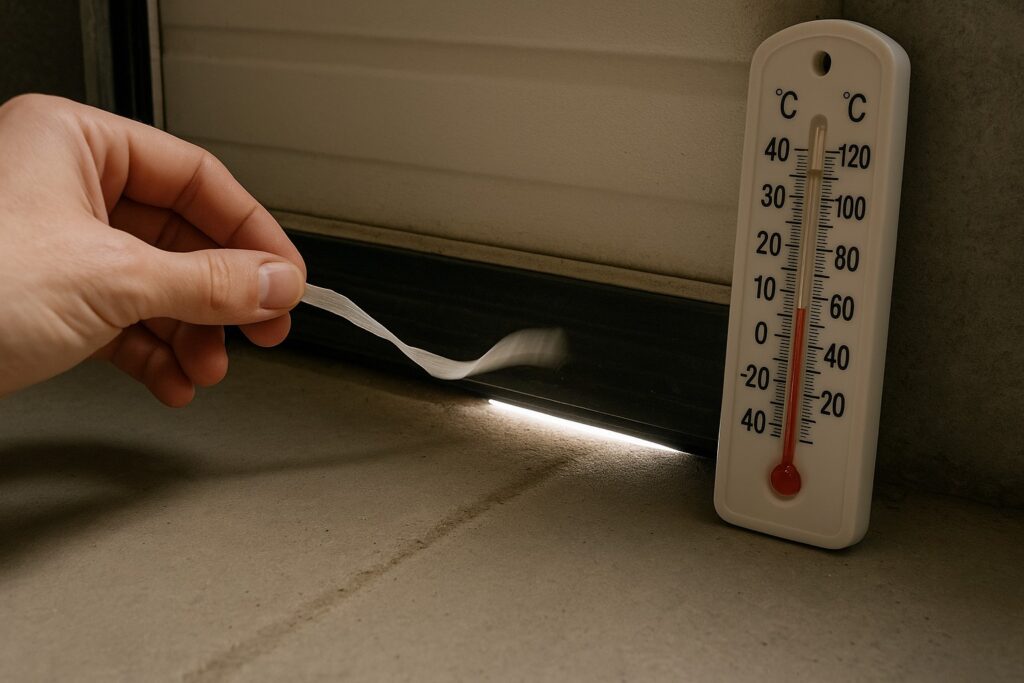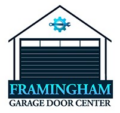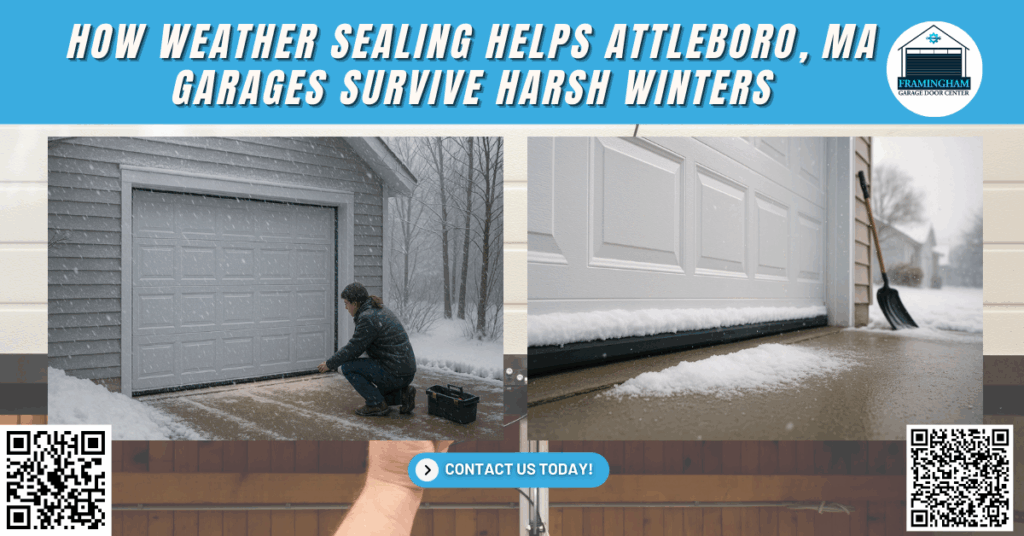Facing Winter in Attleboro: Why Weather Sealing Is More Important Than Ever
In the heart of a harsh Attleboro winter, we received an urgent call from a local auto repair shop. Their garage door had frozen shut overnight, trapping two customer vehicles inside and delaying critical repairs. Snow and slush had seeped into the garage and refroze at the threshold. The culprit? A cracked garage door seal that had gone unnoticed. Once we installed a new EPDM rubber threshold seal and applied a silicone caulk barrier along the door frame, the problem was completely resolved. This real-world situation highlights just how crucial proper weather sealing is during Massachusetts winters.
According to the U.S. Department of Energy (DOE), up to 30 percent of a home’s heating energy can be lost through air leaks, including those around the garage. In the Northeast, where homeowners spend a significant portion of their budget on heating, poor insulation and sealing can lead to skyrocketing utility bills. Attleboro, with its fluctuating winter temperatures and snow-heavy climate, demands that every home and commercial building take garage door weatherproofing seriously.
At Framingham Garage Door Center, we help Attleboro homeowners and business owners prepare their garages with professional weather sealing services. This essential step includes installing garage door bottom seals, threshold seals, side seals, and other protective components that create an airtight, energy-efficient barrier. Our goal is to keep garages warmer, safer, and drier throughout the winter months.
What Is Weather Sealing?
Weather sealing, also known as door weather stripping, refers to a collection of materials and techniques used to seal gaps and joints in and around your garage door. These materials include garage door bottom seals, threshold seals, side and top seals, foam tape, and rubber door strips. These components work together to prevent unwanted elements such as cold air, water, pests, and debris from entering the garage space.
Effective garage door weatherproofing involves using a variety of products. Bottom seals and under-door seals close the gap between the door and the floor. Threshold seals, typically made from aluminum or EPDM rubber, are applied directly to the floor beneath the door. Side seals and top seals cover the vertical and horizontal edges of the doorframe, often using vinyl sweep or adhesive rubber seals. For added protection, magnetic door strips and foam weatherstrip tape can help seal garage door panels and windows.
The comprehensive nature of weather sealing not only supports draft protection and condensation prevention but also serves as a defense against mold, rodents, and insects that seek shelter during the cold season.
Why Weather Sealing Matters in Attleboro, MA
Protecting Your Garage From Subzero Temperatures
Winter temperatures in Attleboro frequently drop below freezing. Garages with poor or deteriorated sealing become vulnerable to cold drafts that seep in through every tiny gap. This makes it harder for your heating system to maintain consistent temperatures in adjacent rooms and can negatively affect your garage space.
For residents using their garages as workshops, home gyms, or even temporary storage for sensitive items, an unsealed garage can be disastrous. Installing a high-performance rubber door strip, foam seal, or door sweep kit can make a noticeable difference by maintaining a more stable internal environment.
Preventing Moisture Damage and Ice Buildup
Water intrusion is a major issue in New England. Snow and sleet can melt and refreeze, forming dangerous ice patches inside garages. These conditions can lead to surface damage, create slipping hazards, and make garage doors stick or freeze shut. Installing an aluminum threshold or EPDM rubber threshold seal keeps water from creeping into the garage.
To further guard against moisture, professionals use tools like a heat gun to shrink-seal window insulation film and apply window caulking around frames. This dual approach helps eliminate condensation and reduces the risk of long-term water damage.
Improving Energy Efficiency
Homes with attached garages lose a considerable amount of heat through unsealed doors. According to ASHRAE standards and Energy Star recommendations, sealing garage doors can significantly reduce heating loss. Installing a garage insulation kit in combination with adhesive door seals and door trim seals improves the thermal barrier between indoor and outdoor spaces.
Weather sealing aligns with broader energy efficiency standards set by organizations like the International Code Council and Underwriters Laboratories (UL), which emphasize reducing residential energy consumption.
Keeping Pests Out
Gaps around garage doors act as open invitations for pests. Rodents, insects, and small animals seek warmth during the colder months. A deteriorated or loose door sweep provides just enough space for them to enter. Applying vinyl sweeps, foam tape, and magnetic door strips ensures a tight seal that blocks out these uninvited guests.
Regular inspections help identify signs of seal deterioration, including cracked seals or warping, which should be addressed before they become entry points for pests.
Key Areas That Require Weather Sealing
Garage Door Bottom Seal and Threshold
The most vulnerable area for air and moisture intrusion is where the garage door meets the floor. Garage door bottom seals, often made from durable EPDM rubber or vinyl, compress tightly to form a seal when the door closes. Threshold seals are mounted directly to the floor using installation adhesive or screws. Combined, these two elements act as a draft stopper and barrier against water, snow, and dirt.
Installers use tools like a utility knife or shears to cut the seal to fit, along with measuring tape to ensure accurate placement. For best results, the sealing should be even and uninterrupted across the door width.
Side and Top Seals
Side seals and top seals protect the vertical and overhead gaps between the garage door and its frame. These seals are often made from vinyl trim or heavy-duty foam weatherstrip tape. They form a secure barrier when the door is closed, preventing wind and precipitation from entering the sides.
These seals are typically installed using a sealant gun and adhesive or screws. Miter shears may be used to cut the trim at precise angles for tight corner fits, ensuring a complete perimeter seal.
Panel Gaps and Garage Windows
Sectional garage doors may have small gaps between panels. Foam tape and magnetic door strips can be applied to these areas to block airflow. Garages with windows can benefit from window insulation kits, heat-shrink seal films, and window caulking, which help reinforce the thermal barrier.
In addition, thermal curtains or insulated window panels can be added inside the garage to provide another layer of protection.
Doors and Entryways
Side entry doors leading into or out of the garage must also be sealed. Foam seals, draft stoppers, door sweep kits, and adhesive rubber seals are all useful. These additions help stop airflow and moisture at secondary access points.
Material Options for Weather Sealing
Choosing the right material for weather sealing is essential for long-lasting protection. Here are some of the most common options and their uses:
| Material | Use Case | Benefits |
| EPDM Rubber | Bottom seals, threshold seals | Excellent flexibility and durability in cold climates |
| Vinyl Sweep | Side and top seals | Weather-resistant and long-lasting |
| Foam Tape | Windows, door frames, panel gaps | Easy to apply, low-cost draft protection |
| Silicone Caulk | Cracks and gaps | Waterproof, long-lasting sealant |
| Aluminum Threshold | Floor-mounted seal | Strong, rust-resistant, good for uneven surfaces |
| Magnetic Strip | Panel and door sealing | Creates airtight seal on metal surfaces |
| Adhesive Rubber Seal | Entry doors and trims | Quick application, effective air barrier |
Do-It-Yourself vs. Professional Installation
DIY weather sealing can be a cost-effective option for minor improvements. Homeowners can find weather sealing materials at most hardware stores and apply them using basic tools like measuring tape, a utility knife, a caulking gun, and a heat gun. Door sweep kits and foam tape are especially beginner-friendly.
However, for more comprehensive and durable results, professional installation is highly recommended. At Framingham Garage Door Center, our trained technicians conduct a full inspection, identify all air leak repair needs, and install commercial-grade sealing products with precision. We use industrial-strength adhesives, customized door trim seals, and specialized tools to ensure the seal lasts multiple seasons without deterioration.
How Weather Sealing Benefits Different Types of Garages
Residential Garages
For Attleboro homeowners, weather sealing protects vehicles, tools, and stored items from the damaging effects of moisture and freezing temperatures. A sealed garage also contributes to overall home comfort by reducing heat loss through attached walls. By investing in weatherproofing and garage insulation, families can lower utility bills and improve indoor air quality.
Detached Garages and Workshops
Detached structures may not benefit from central heating and are more vulnerable to drafts and moisture. Weather sealing and insulation in these spaces allow for extended usage during the winter months. Whether it’s a woodshop, art studio, or seasonal storage unit, sealing enhances usability and prevents structural damage.
Commercial and Industrial Garages
Auto shops, delivery hubs, and storage warehouses rely heavily on garage accessibility. Frozen tracks, ice buildup, and wind exposure can disrupt operations. Commercial-grade garage door bottom seals, aluminum thresholds, and air-tight vinyl sweeps ensure that business continues without interruption. Maintenance costs also decrease when proper weatherproofing is in place.
Signs That Your Garage Needs New Seals
Inspect your garage regularly for signs of wear and damage. Common indicators include:
- Visible light around the edges of the garage door
- Drafts and cold spots near the door
- Puddles or dampness inside the garage
- Cracked seals, peeling foam tape, or loose door sweeps
- Increased pest activity during the winter

Seasonal replacement is recommended every one to two years, depending on the level of exposure. Seal inspection should be part of your annual fall maintenance checklist.
How Often Should You Replace Weather Seals?
Weather seals degrade over time due to exposure to sun, ice, and mechanical wear. Depending on the materials used, seals may need to be replaced every 12 to 24 months. Frequent use, direct sunlight, or harsh weather can accelerate deterioration.
Our experts at Framingham Garage Door Center conduct detailed inspections to assess the condition of existing seals. We check for shrinkage, hardness, separation, and water penetration, then recommend repair or replacement as needed.
Enhancing Sealing With Garage Door Insulation
Garage insulation works in tandem with weather sealing to enhance overall protection. Foam board insulation, reflective barriers, and fiberglass kits can all be added to garage doors. When combined with air-tight weather stripping and proper sealing, the result is a significantly more comfortable, efficient, and quieter space.
Many homeowners in Attleboro also use thermal curtains, window caulking, and insulated door sweeps to reinforce their insulation efforts. These solutions are relatively low-cost but yield high returns in comfort and savings.
Frequently Asked Questions (FAQs)
1. What is the best time of year to install garage door weather sealing in Massachusetts?
The best time to install or replace weather sealing is in early fall, before temperatures drop significantly. This ensures your garage is protected throughout winter without dealing with frozen surfaces or weather-related delays.
2. Can weather sealing reduce noise from outside the garage?
Yes, quality weather sealing materials like foam tape, rubber door strips, and garage insulation help block out external noise. This is especially useful for garages used as workshops or home offices.
3. Will weather sealing affect the movement or function of my garage door?
When properly installed, weather sealing should not interfere with the door’s movement. In fact, it often improves door performance by reducing friction and preventing debris buildup along the tracks and threshold.
4. How can I tell if my garage door is properly sealed?
Close your garage door and check for visible light, drafts, or temperature differences near the edges. You can also perform a “dollar bill test” by closing the door on a dollar bill—if you can easily pull it out, your seal may need replacement.
How Can Framingham Garage Door Center Help You?
Framingham Garage Door Center is your trusted partner for professional weather sealing in Attleboro, MA. Our services include:
- Comprehensive garage seal inspection and seasonal replacement
- Installation of garage door bottom seals, threshold seals, and side/top seals
- Application of high-grade EPDM rubber, foam seals, magnetic door strips, and more
- Repair of cracked seals, under-door gaps, and loose door sweeps
- Window insulation, caulking, and garage insulation services
We serve both residential and commercial properties with expert technicians who prioritize your comfort, safety, and energy savings. With a proven track record of helping homes and businesses across Massachusetts, we are ready to weatherproof your garage against the toughest winters.
Visit Us: 19 Temple St GF, Framingham, MA 01702
Call Today: (508) 213-9614
Final Thoughts
Weather sealing is more than just a seasonal upgrade. It is a long-term investment in comfort, energy efficiency, and property protection. In a climate like Attleboro’s, where winters can be brutal and unpredictable, taking proactive steps to seal your garage door can save you from unnecessary damage and high energy costs. Whether you are a homeowner aiming to lower heating bills or a business trying to avoid downtime, weatherproofing your garage is a smart, strategic decision.
Framingham Garage Door Center stands ready to assist with top-tier solutions tailored to your specific needs. Don’t wait until the next snowstorm or cold snap. Ensure your garage is sealed, secure, and ready to handle whatever winter throws your way.
Contact us today for a free consultation and let us help you build a warmer, safer, and more efficient future for your garage.

